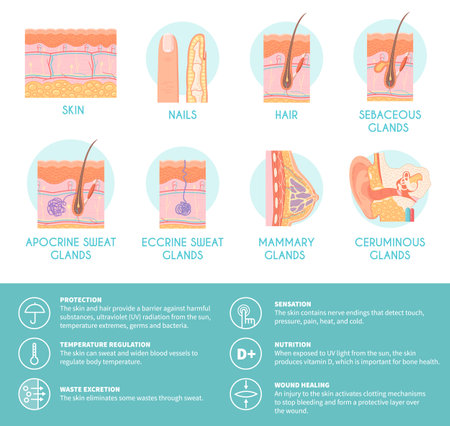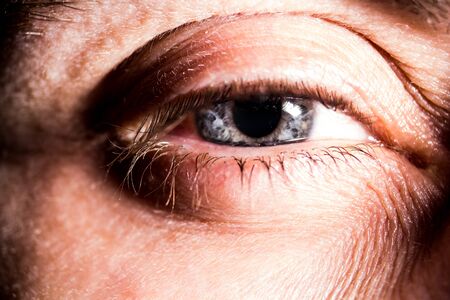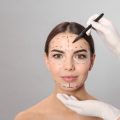1. Introduction to Eyelid Tightening
Eyelid tightening treatments have become increasingly popular in the United States, as more people seek ways to look refreshed and youthful without undergoing invasive surgery. Our eyes are one of the first areas to show signs of aging, often making us look tired or older than we feel. But what exactly causes eyelids to droop or sag, and how can modern treatments help? In this section, we’ll take a closer look at why eyelid tightening is in demand, what these procedures involve, and how to recognize the common signs of eyelid aging.
Why Americans Are Seeking Eyelid Tightening Treatments
In American culture, looking alert and energetic is often associated with confidence and vitality. As a result, many individuals turn to eyelid tightening solutions to maintain a fresh appearance at work, in social situations, and even on video calls. Non-surgical options have made these treatments more accessible than ever.
Common Signs of Eyelid Aging
| Sign | Description |
|---|---|
| Sagging Skin | The skin above or below the eyes starts to droop due to loss of elasticity. |
| Wrinkles & Fine Lines | Crow’s feet and small wrinkles appear around the eyes as collagen decreases. |
| Puffy Eyelids | Fat deposits and fluid retention can cause puffiness or bags under the eyes. |
| Dark Circles | Thinning skin or pigment changes may lead to visible dark circles. |
An Overview of Eyelid Tightening Treatments
Eyelid tightening encompasses a range of options from topical creams to advanced medical devices. Some of the most popular methods include radiofrequency (RF) therapy, laser treatments, ultrasound-based procedures, and minimally invasive surgeries like blepharoplasty. Each treatment works differently but shares the goal of firming up loose skin and giving your eyes a more youthful contour.
2. The Science of Skin Aging Around the Eyes
Understanding Why Eyelids Start to Sag
The skin around your eyes is some of the thinnest and most delicate on your body. This makes it especially vulnerable to aging. Over time, you might notice drooping, puffiness, or fine lines forming on your eyelids. But why does this happen? Let’s break down the key reasons behind eyelid sagging in a way that’s easy to understand.
Main Factors That Cause Eyelid Sagging
| Factor | How It Affects Eyelids |
|---|---|
| Collagen Loss | Collagen is a protein that keeps skin firm and smooth. As we age, our bodies produce less collagen, making eyelid skin thinner and more likely to sag. |
| Decreased Elasticity | Elastin fibers give skin its ability to bounce back after stretching. With age, these fibers break down, so the skin doesn’t snap back as easily, causing drooping. |
| Environmental Damage | Sun exposure, pollution, and smoking create free radicals that damage skin cells and speed up aging, especially around the sensitive eye area. |
| Repeated Eye Movements | Blinking, squinting, and rubbing your eyes over many years can weaken eyelid skin and lead to wrinkles or sagging. |
| Fat Redistribution | With age, fat pads under the eyes can shift or decrease, leading to hollow-looking eyes or puffy lids. |
The Aging Process in Everyday Life
You might notice that your eyelids look more tired after a long day or after spending time in the sun. This isn’t just about being sleepy—these are signs of how daily life affects our skin. Even habits like not wearing sunglasses or using harsh makeup removers can make a difference over time.
Why Understanding These Changes Matters
Knowing what causes eyelid sagging helps you understand why certain treatments work the way they do. Whether you’re considering non-surgical options like radiofrequency or laser therapy—or surgical procedures—these treatments aim to restore collagen, boost elasticity, or repair damaged tissues. By learning about the science behind eyelid aging, you can make more informed choices about how to care for your eyes as you age.

3. Popular Eyelid Tightening Treatments in America
Non-Surgical Eyelid Tightening Options
For many people in the United States, non-surgical eyelid tightening treatments are a popular choice. These procedures usually require little to no downtime and are less invasive than surgery. Here are some of the most common options:
| Treatment | How It Works | What to Expect |
|---|---|---|
| Radiofrequency (RF) | Uses energy waves to heat the deeper layers of skin, stimulating collagen production and tightening the skin. | Mild redness or swelling after treatment; results appear gradually over a few weeks. |
| Ultrasound (e.g., Ultherapy) | Delivers focused ultrasound energy to lift and tighten skin by jumpstarting collagen growth. | Some tingling or discomfort during treatment; gradual improvement over 2-3 months. |
| Laser Treatments (e.g., CO2 Laser) | Uses targeted light beams to remove damaged skin cells and boost new collagen for firmer skin. | Puffiness and redness may last a few days; smoother, tighter eyelids develop as skin heals. |
Why Choose Non-Surgical Methods?
Non-surgical treatments are ideal for people with mild to moderate eyelid sagging who want natural-looking results without going under the knife. They’re also appealing because they generally have fewer risks and quicker recovery times compared to surgical options.
Surgical Eyelid Tightening: Blepharoplasty
If you’re looking for more dramatic or long-lasting results, blepharoplasty (eyelid surgery) is a common solution in America. This procedure involves removing excess skin, fat, or muscle from the upper or lower eyelids. It’s especially effective for people with significant drooping or “hooded” eyelids that can even affect vision.
How Surgical Eyelid Tightening Works
A board-certified plastic surgeon makes small incisions along the natural creases of your eyelids. Through these incisions, they remove extra tissue and may reposition fat for a smoother appearance. Stitches are usually removed within a week, and most patients return to normal activities soon after.
Comparing Non-Surgical and Surgical Approaches
| Option | Best For | Downtime | Longevity of Results |
|---|---|---|---|
| Non-Surgical (RF, Ultrasound, Lasers) | Mild to moderate sagging | Lifestyle-friendly (a few hours to days) | Several months to a few years, with maintenance sessions needed |
| Surgical (Blepharoplasty) | Significant sagging or drooping affecting vision/appearance | A week or two of recovery time | Long-lasting (years), sometimes permanent with proper care |
No matter which option you choose, it’s important to talk with a qualified medical professional who understands your needs and goals. With today’s advanced technology and techniques available across the U.S., there’s an eyelid tightening solution that fits just about every lifestyle.
4. How These Treatments Work on a Cellular Level
Understanding how eyelid tightening treatments work starts with knowing what happens beneath your skin’s surface. These treatments target the collagen and elastin fibers that keep your eyelids smooth and firm. As we age, our bodies produce less collagen, leading to sagging or drooping skin around the eyes. Eyelid tightening procedures aim to reverse this process by boosting collagen production in targeted areas.
Key Treatments and Their Cellular Effects
| Treatment Type | How It Stimulates Collagen | Typical Devices/Methods |
|---|---|---|
| Laser Therapy | The laser creates controlled micro-injuries in the skin, signaling your body to produce new collagen during the healing process. | CO2 Laser, Erbium Laser |
| Radiofrequency (RF) | RF energy heats the deeper layers of the skin, causing existing collagen fibers to contract and triggering new collagen formation over time. | Thermage, Pelleve |
| Ultrasound Therapy | Focused ultrasound waves penetrate deep into the skin, gently heating tissues and stimulating collagen growth at a cellular level. | Ultherapy |
| Microneedling | Tiny needles create micro-channels in the skin, encouraging the body’s natural repair response and boosting collagen production. | Dermaroller, RF Microneedling Devices |
The Science Behind Collagen Remodeling
All these treatments share a common goal: to jumpstart your skin’s natural regeneration process. Here’s what happens:
- Controlled Injury: The treatment causes tiny, controlled damage to the skin without harming surrounding tissue.
- Inflammatory Response: Your body recognizes the injury and sends repair cells to the area.
- Collagen Synthesis: Fibroblast cells begin producing fresh collagen and elastin fibers, making the skin firmer and tighter over weeks or months.
- Smoother Skin: As new collagen matures, it helps lift sagging eyelids and smooth out fine lines.
What Makes Each Method Unique?
The main difference between these technologies is how they deliver energy (heat or mechanical stimulation) to the deeper layers of your skin. For example, lasers use light energy, RF uses electrical currents, ultrasound uses sound waves, and microneedling uses tiny punctures. But all of them are designed to trigger your body’s own repair mechanisms safely and effectively.
5. What to Expect: Results, Recovery, and Safety
Realistic Outcomes of Eyelid Tightening Treatments
Eyelid tightening treatments can deliver noticeable results, but it’s important to understand what you can realistically expect. Most people see smoother, firmer skin around the eyes, with reduced sagging or drooping. However, results vary depending on the treatment method (such as lasers, radiofrequency, or ultrasound), your skin type, age, and how your body responds.
| Treatment Type | Expected Results | How Long Results Last |
|---|---|---|
| Laser Resurfacing | Smoother, tighter skin; some reduction in wrinkles | 1-3 years with good skincare |
| Radiofrequency (RF) | Mild to moderate tightening; subtle lift | 6-12 months; maintenance may be needed |
| Ultrasound (Ultherapy) | Gradual tightening and lifting over several months | 1 year or more; varies by individual |
| Surgical Blepharoplasty | Dramatic tightening and removal of excess skin | 5+ years; results often long-lasting |
Recovery Times: What You Need to Know
The downtime after eyelid tightening depends on the type of procedure:
- Non-surgical treatments (laser, RF, ultrasound): Most people experience mild swelling or redness for a few hours to a couple of days. You can usually return to work and daily activities quickly.
- Surgical blepharoplasty: Expect more swelling and bruising, which typically subsides in 1-2 weeks. Stitches (if any) are usually removed within a week. Full recovery can take several weeks.
Quick Recovery Comparison Table:
| Treatment Type | Downtime | Pain Level (1-5) | Back to Work? |
|---|---|---|---|
| Laser/RF/Ultrasound | 0-3 days | 1-2 (mild discomfort) | Same or next day |
| Surgical Blepharoplasty | 7-14 days (visible swelling/bruising) | 2-3 (moderate discomfort) | Usually after 7 days |
Potential Risks and Side Effects in the U.S.
Eyelid tightening procedures are generally safe when performed by licensed professionals. However, every treatment carries some risks:
- Mild side effects: Temporary redness, swelling, bruising, dry eyes, or itching.
- Serious but rare risks: Infection, scarring, burns (with lasers), changes in skin color, asymmetry, or vision issues after surgery.
If you have underlying health conditions or take certain medications (like blood thinners), discuss this with your provider before treatment.
Safety Tips for American Patients
- Choose board-certified providers: Look for doctors certified by the American Board of Plastic Surgery or Dermatology.
- Avoid “med spas” without medical supervision: Only get treatments from licensed clinics with qualified staff.
- Follow post-treatment care instructions: Use gentle cleansers and sunscreen; avoid rubbing your eyes or using harsh products during recovery.
- If you notice unusual pain or signs of infection (like pus, fever, or severe redness), contact your doctor immediately.
Your safety is always the top priority—do plenty of research and never hesitate to ask questions before committing to an eyelid tightening procedure in the United States.


